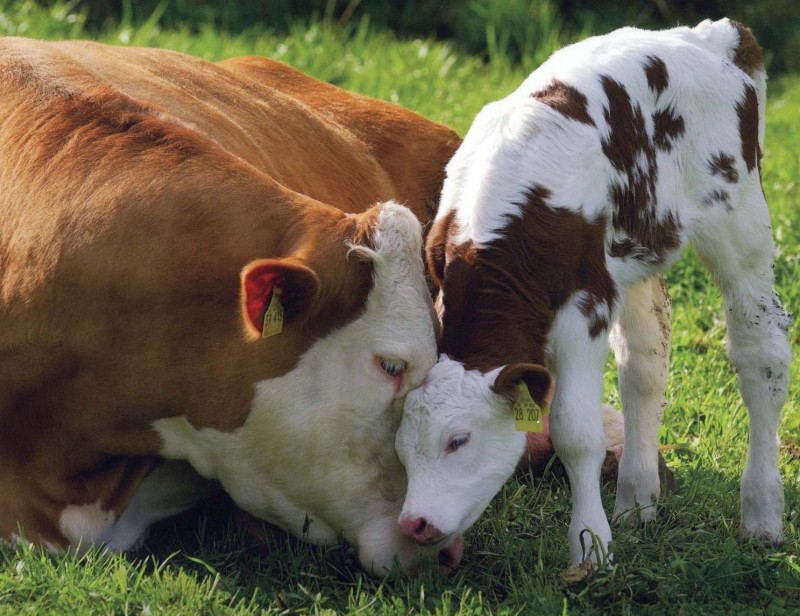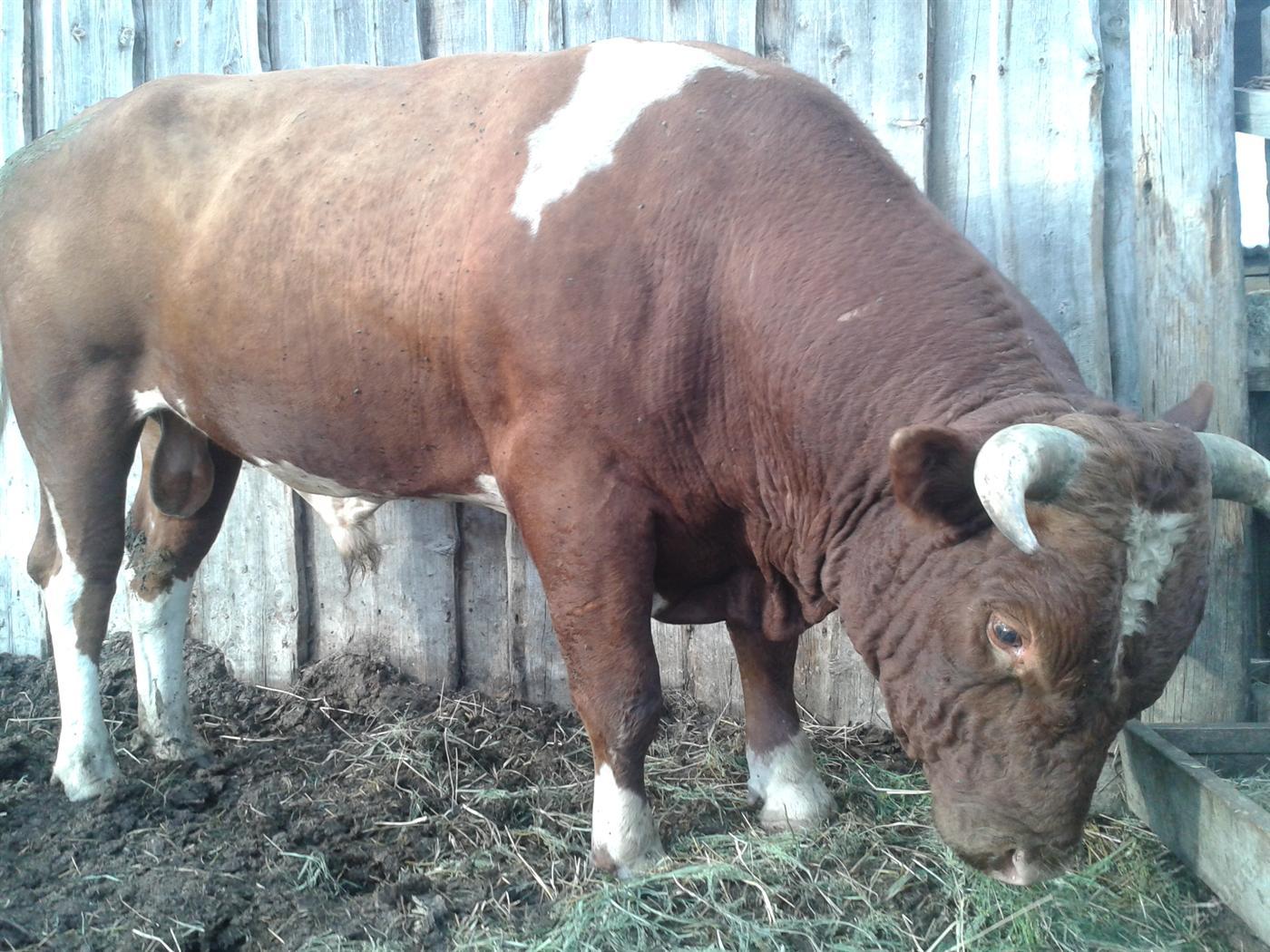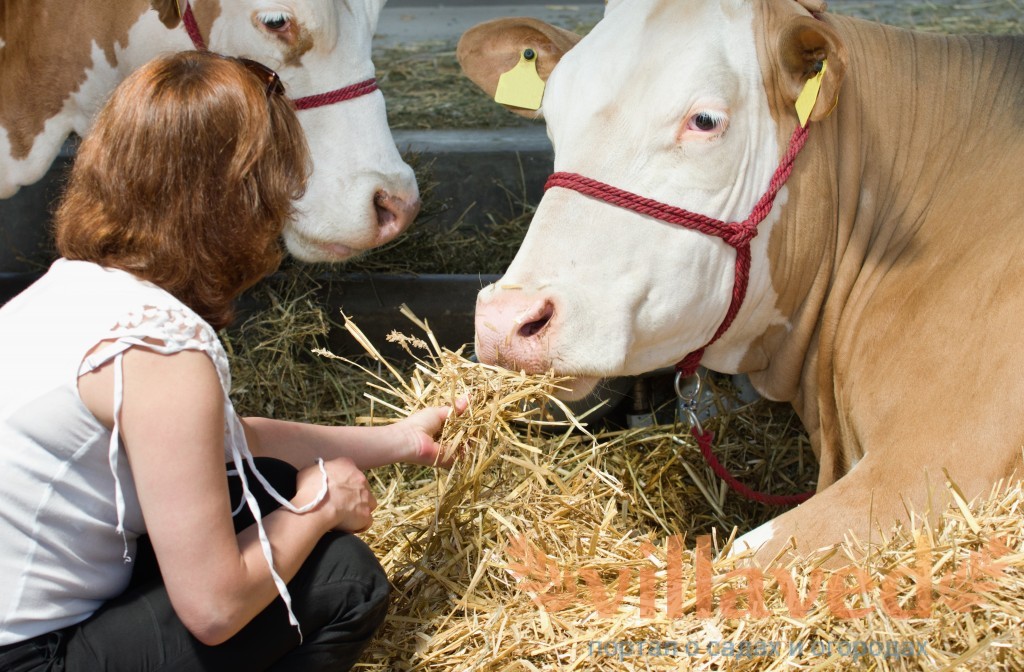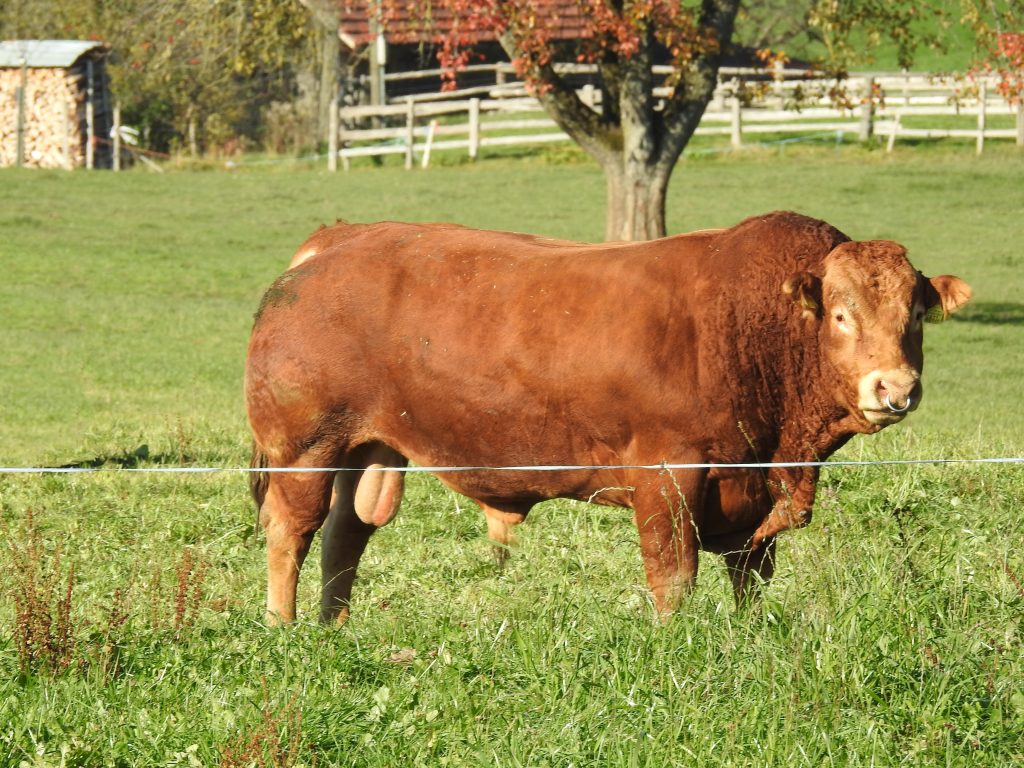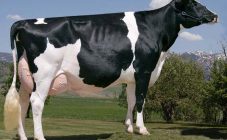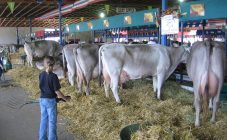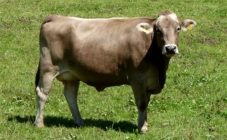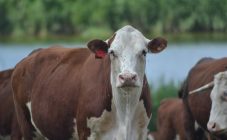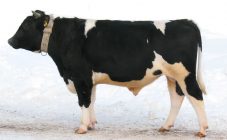Content:
Breeding cattle has been engaged in for more than one century, in particular, they keep cows not only on private estates, but also breed them on an industrial scale. Particularly popular were cows with meat and dairy productivity; from animals of this direction, high-quality milk with a fairly high percentage of fat content and meat with excellent taste are obtained.
The Simmental breed of cows is one of the best among all meat and dairy cows. It is quite profitable to keep such animals in your backyard, because these animals have regular high yields, and the young are distinguished by early maturity, quickly gaining body weight, therefore, by six months, Simmental bulls gain up to 170-180 kg, and at this age they can already be sent to slaughter.
Other positive qualities of this cattle, breeding and further care - all this will be described below.
Description of the Simmental breed
The homeland of this breed of cattle is Switzerland, but there are no specific facts about how it came into being. It is only known that this breed was grown by Celtic farmers more than 15 centuries ago. These tribes lived in the territory of modern Switzerland, they had a well-developed agriculture, as well as cattle breeding. The animals were bred in the Simmental Valley, which is why the breed is called that. In the process of breeding, the breeders sought to obtain animals that would feel comfortable in high-mountain pastures and would have a high milk yield. However, more than 14 centuries passed before the simmental cow began to yield really good milkings, and her milk became so fat that it made delicious cheeses. \
But all these centuries, representatives of this breed of cattle were distinguished by a strong constitution of the body, with milk productivity below average. But these animals had high immunity, were unpretentious to the conditions of maintenance and care, therefore they were often used for breeding work in order to improve the characteristics of other breeds, as well as to create new ones:
- Bulgarian red;
- fleckfie;
- Montbeliard;
- Hungarian variegated and many others.
And only in the 19th century, after a long and serious work, breeders managed to increase the milk productivity of Swiss cows of this breed without compromising the quality of dairy products. And about a century and a half ago, Simmentals were brought to Russia. For decades, Russian (and then Soviet) breeders have been working to improve some of the qualities of these animals. In particular, work was carried out to acclimatize them in different regions of the country. Currently, the Simmental cattle can be found in many regions of Russia, as well as in Belarus, Kazakhstan, and Ukraine.
Bull simmental was used by breeders from different republics of the Soviet Union to breed new cattle breeds, as well as to improve the productivity and other qualities of modern cows.
Since at present the productivity of this cattle is both beef and dairy, therefore, the addition of cows is appropriate. Farmers mainly raise these individuals for meat, and milk production is in second place.Although adult Simmental representatives are not tall, their body is so massive that from the outside these animals seem very heavy and huge.
The height at the withers of an adult Simmental bull is 1.37-1.48 m, and the oblique body length is 1.62-1.64 m, and cows of this breed are 10-12 cm lower than males. The chest is wide and deep enough, the dewlap is good developed. The back is flat and straight, its width is more than average. The withers, pronounced not well enough and smoothly turning into a powerful nape, are almost invisible.
The small head passes into a short, but muscular neck. In bulls, the cervical muscles are so developed that they are very similar to a hump. The thickness of the neck from the top of the crest to the larynx is equal to the length of the head. The lumbar and sacrum are straight and the same size as the back. Powerful and long tail extending to the lower extremities. The limbs are small in size with well-developed strong muscles, the legs are set correctly. The udder of a cow is small, round, almost bowl-shaped.
Other color options range from light tan to dark brown. Spots of piebald color can be insignificant, or occupy almost the entire body, behind which the main color is practically invisible.
The disadvantages of the main breed standard include:
- back slack;
- the chest is less than a certain size;
- hind legs are not set correctly;
- the front lobes of the udder are less developed than the rear ones;
- fatty udder.
Characteristics of the Simmental cow breed
Weight of representatives of the Simmental breed:
- cow weight - 540-920 kg;
- bull weight - 840-1320 kg;
- newborn simmental calves can weigh from 33 to 44 kg;
- with proper fattening, young animals weigh up to 210-225 kg by six months;
- by the year, the difference in weight between bulls and heifers is more than 90 kg;
- the weight of young animals per year is 235-345 kg;
- with a properly composed diet, a calf can gain 0.8-1.0 kg per day.
One-year-old bulls and discarded females can be sent for slaughter.
How much milk can an adult cow give? It is difficult to answer this question unequivocally - the average milk yield from one female can be from 3.4 to 4.9 tons of milk per year. If a cow is milked correctly, then she can produce up to 5.9-6.1 tons.
The average fat content of milk is 4-5%, and the maximum is up to 5.9-6.1%.
Breeding and general rules for caring for the Simmental breed at home
Since individuals of this breed have grazed on high-mountain pastures for more than one century, they have endurance, good adaptation to any climatic conditions. Calves, as a rule, are born with a high viability, their survival rate is close to 100%. This is also facilitated by high-quality mother's milk with a high percentage of fat content.
Most often, the calf is left next to the mother for up to 8-9 months, gradually introducing adult feed into its diet.
Owners of heifers begin to cultivate grain earlier so that they can develop a rumen more efficiently. But bulls can, without prejudice to weight gain, be sucked for up to 10 months.
But in general, the breeding and keeping rules of simmentals do not differ from the rules for keeping other meat and dairy cattle breeds.
Disadvantages and advantages over other breeds
The main advantages of the breed include:
- fast weight gain in young animals;
- a calf can gain about 1 kg of live weight per day;
- milk fat content - at the level of average results for dairy cows;
- fast acclimatization to new climatic conditions;
- Simmental representatives are distinguished by good health, rarely get sick.
The obvious disadvantages include the aggressiveness of adult bulls. A peculiarity of cows is the possibility of problems at first calving: newborn calves are large enough, so you need to stay close to the cow during the first birth.
Tips and tricks from experienced breeders
This breed can be divided into representatives of the meat orientation and meat and dairy. And what the young growth will be like in the future is difficult to say at its birth.
Livestock breeders note that cows are quick-witted and calm disposition, remembering well the time when they will be milked or fed. The diet should usually contain fats (preferably of animal origin), proteins and carbohydrates.
If possible, with the appearance of the first grass on pastures, it is better to drive these animals out to graze - this way the owners can save on feed, and the milk productivity of the cows will dramatically increase on the succulent grass. But it is better for the shepherd to graze the herd of Simmentals near the reservoir so that the cows do not feel thirsty.
Simmental cows give a good yield of tasty fat milk and high quality meat. Thanks to these qualities, animals occupy a leading position among cattle breeds of meat and dairy type.
